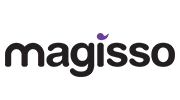Specialty coffee is resilient, but is it recession-proof?

Global economic uncertainty has persisted in a post-pandemic world, compounded by political instability, labour shortages, and the impact of conflict on supply chains. Given these conditions, economists predict a 45% chance that a global recession will happen by the end of 2025.
The exact timings and levels of severity would vary from country to country. But many industries around the world, including coffee, would feel the effects.
Coffee’s lower price point means global demand remains relatively stable during periods of economic downturn, signalling the industry’s resilience. However, with arabica and robusta futures reaching record highs and market volatility showing no signs of slowing down, higher retail prices are becoming a new reality for roasters, coffee shops, and consumers.
As inflation rates and costs increase across the board, indicating that a global recession could be imminent, consumer behaviour will inevitably shift – and roasters and cafés will need to be prepared.
I spoke with Adam Cozens, the co-founder of Perky Blenders; Jan Anderson, the co-founder of CYA Cover Your Assets; Matt Gillet, Head of UK Business at Square; and Professor Jonathan Morris, a coffee historian and author of Coffee: A Global History, to learn more about how coffee businesses would need to adapt to survive a recession.
You may also like our article on why market volatility means roasters need to be strategic with menu prices.


The coffee industry is facing unprecedented challenges
Economic uncertainty and volatility have become a new normal for coffee businesses, especially following the pandemic.
The immediate aftermath of Covid-19 had a profound impact on the industry. Government-imposed restrictions forced coffee shops and roasteries to temporarily close their doors as part of efforts to curb the spread of the virus.
The huge drop in foot traffic meant coffee businesses had to find new ways to adapt. Many invested in their online and subscription sales, while others focused on curbside pick-up and delivery services. Research from the Specialty Coffee Association indicates that the number of US coffee shops offering these services rose by 521% during the pandemic, signalling the industry’s agility and adaptability to unforeseen challenges.
In the years since, coffee shop and roastery owners have worked to increase foot traffic and strengthen profit margins. Staff shortages, rising inflation and food costs, and record coffee prices, however, have all presented more hurdles to navigate.
The burst in global economic activity as lockdown restrictions were lifted led to supply chain bottlenecks and higher prices. These were later compounded by conflict in Ukraine and Gaza, of which the former, in particular, pushed banks to increase interest rates as inflationary pressures mounted.
Higher prices and inflation rates pose several challenges for coffee shops and roasters, which already operate on thin margins. However, because coffee is an inelastic product (meaning consumers are reluctant to give it up), the industry is considered resilient during periods of economic downturn.
“Coffee is a relatively affordable daily treat for most people,” says Adam Cozens, the Managing Director of Perky Blenders, a specialty coffee roaster in London, UK. “The experience of buying one can positively affect how we feel, and during more financially challenging times, there are many other items that are likely to be struck off the list of daily must-haves first.
“Consumers who regularly buy from independent shops build relationships with the brand and the staff, so they feel a level of inclusion in the businesses they support.”
How a recession could impact specialty coffee
Despite robust demand, even with rising inflation rates and coffee prices, cafés and roasters should anticipate a decline in foot traffic as consumers tighten their belts.
“Recession proofing is more related to coffee’s position as a basic quasi-functional element
within people’s daily consumption patterns,” says historian and author Professor Jonathan Morris. “Within the specialty sector, businesses should remember that while consumers are usually averse to ‘down-trading’ their experiences, there is a considerable incentive for them to do so when other coffee products can offer the same functional effects at a lower cost.”
Coffee has a lower price point, which certainly benefits coffee shops during a cost of living crisis, unlike the restaurant industry, which saw 10% of businesses permanently close following the pandemic in the UK alone.
However, to cope with rising prices, consumers are likely to shift their purchasing behaviour. This could range from brewing more coffee at home, which the pandemic well-prepared them for, to buying cheaper coffee products from supermarkets and grocery retailers.
While lowering their prices could offer a competitive advantage, many coffee businesses are grappling with ever-tightening margins in the wake of record arabica futures. Prices reached over US $4.41/lb in early February 2025, meaning most roasters and coffee shops have little choice but to raise their retail prices.
“Coffee is recession-proof, but coffee businesses are not. Coffee, particularly specialty coffee, has become a highly desirable curated experience,” says Jan Anderson, the CEO of CYA Cover Your Assets, an asset tracking and management system designed specifically for coffee businesses. “For many consumers, it’s self-fashioning, an important part of their identity. But throughout my career, I have understood that coffee is undervalued and not expensive enough.
“The price of retail coffee beverages should always reflect the quality of the coffee and the experience, but I think that many coffee businesses are too cautious about raising prices when their green prices or other expenses go up, especially when they’ve priced themselves below other businesses in their area for fear of driving their consumers away,” she adds. “This is how coffee businesses erode their margin, and the race to the bottom is brutal.
“We should be confident that consumers will always do their part; that they’ll keep drinking their favourite coffees and pay a little more.”


Navigating coffee price increases and narrowing margins
As discourse about a possible global recession persists, especially following US President Trump’s decision to impose tariffs on China, Canada, and Mexico, coffee businesses naturally feel the pressure to respond quickly. Some may launch initiatives as a knee-jerk reaction to cope with the additional strain, but they often prove ineffective when not designed or implemented strategically.
Instead, operators and owners should focus on raising their prices first and foremost – even if it’s an uncomfortable decision to make.
“In my experience, consumers don’t stop drinking their favourite coffee because of price increases; however, they have to be managed carefully, meaning coffee businesses need to move with the market,” Jan explains. “When your costs go up, you must increase your prices. I learned this valuable lesson in my early career as a coffee distributor in New York City in the late 1980s.
“We were importing a high-quality espresso from Italy, and our coffee was already twice the price of the next best espresso. There was a six-month period when the C price underwent a series of rapid-fire increases,” she adds. “I was nervous about increasing our price, so I thought we could absorb this one spike, but then 30 days later, there was an even larger increase. There’s no goodwill benefit for not moving with the herd when the headlines are hot.”
Market analysts predict that arabica prices won’t fall significantly until the end of 2025, placing roasters and coffee shops in a precarious position to balance quality and cost-effectiveness. Predicting how consumer behaviour could change in the coming months as they adapt to rising prices could help businesses pivot their strategies.
“Price spikes in specialty coffee could impact customer behaviour in several ways, but whether fewer people visit coffee shops depends on how businesses pass down these higher costs to their customers and how consumers adjust in turn,” says Matt Gillet, Head of UK Business at Square.
“They may just cut back on how often they buy coffee rather than quit entirely. They may slightly alter their coffee order, opting for smaller sizes or skipping pricy add-ons like syrups and alternative milks to keep their overall order cost down.”


How can coffee shops & roasters adapt in the long term?
The World Bank estimates that global economic growth will remain steady at 2.7% in 2025/26, settling at a rate considered insufficient to support sustained economic development. While this may not necessarily mean a recession is imminent, most signs point to a period of slow financial recovery.
For the foreseeable future, coffee businesses will face rising costs; however, increasing prices to manage margins is just one strategy that roasters and cafés can use.
With consumers expected to drink more coffee at home, investing in retail coffee bags and brewing equipment will likely prove effective at drawing more customers in and increasing their average spending. For coffee shops, this could mean partnering with a wholesaler or starting their own roasting operations.
“Other options include providing more competitively priced products and making better use of blends,” Jonathan says. “Ensure that there is an accessible selection of specialty coffees available alongside the more exclusive or expensive offerings, and don’t undersell the former by focusing on the latter.”
Customer service will remain essential to success
Specialty coffee has always adopted a consumer-centric approach, but this is likely to intensify as prices and inflation rates increase.
“We fully expect reasonable retail price increases to continue as businesses respond to rises in costs of more than just coffee. The key is for shops to communicate the value of what is being served, including the people, relationships, and processes behind the coffee,” Adam says. “Smaller retailers must focus on pricing drinks correctly, communicating their value to customers, and consistently serving exceptional beverages.”
Beyond communicating brand values to justify price rises, roasters and coffee shops can engage with their customers in more reciprocal ways.
“Customers appreciate transparency, and businesses can connect with their customers on social media or directly educate them about the quality, ethical sourcing, and effort behind each cup,” Matt says. “Reward schemes can also serve to make the customer feel valued, offering exclusive perks and limited edition products to loyal followers.
“By balancing transparency, added value, and customer engagement, coffee businesses can navigate rising costs while maintaining strong customer loyalty.”


As questions about a global recession persist, cost-saving measures and targeted growth strategies will become more important for coffee shops and roasters.
But ultimately, maintaining strong customer relationships will be crucial for businesses planning to weather the challenging times ahead.
Enjoyed this? Then read our article on why roasters can’t rely on price drops in the current market.
Photo credits: Perky Blenders, Square
Perfect Daily Grind
Want to read more articles like this? Sign up for our newsletter!









